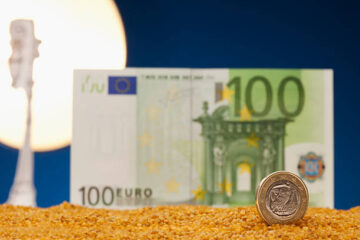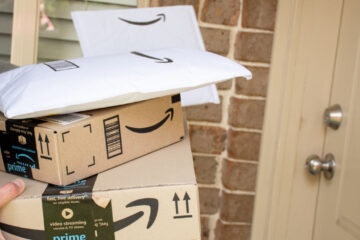We spent a few weeks with the entry-level Kindle to see how it stacks up and if it’s worth the cost.
Amazon’s Kindle lineup is arguably the gold standard for e-readers. They’re lightweight, have long battery life and can hold hundreds if not thousands of books. Amazon’s entry-level Kindle recently received what amounts to be a big upgrade, without much of a price increase. Previously, the base Kindle was $89, but the 2022 version comes in at $99.
There are a few meaningful upgrades to the new Kindle that after some testing in my opinion justify the price increase, namely the display has received an upgrade that makes an even bigger difference when reading.
I’ve been using the 2022 Kindle for a few weeks to see if the changes make it the Kindle to get, or if the Paperwhite still holds that title. And I have to admit, it’s not as clear cut as you’d think.
The Arena Media Brands, LLC and respective content providers may receive compensation for some links to products and services on this website.
A Story of Notable Improvements
The 2022 Kindle is slightly smaller and lighter than its 2019 predecessor, but don’t let that fool you. There are some pretty notable improvements here that makes it more like the $139 Paperwhite than the entry-level Kindle it’s long been treated as.
The most notable upgrade to the 2022 Kindle is the display resolution. It’s still 6-inches, but the pixels-per-inch has increased to 300, up from 167 PPI in the previous model. That’s the same resolution as the Kindle Paperwhite, and it’s a noticeable boost.
What that means for the end user is that pictures look a little sharper (although, it’s an e-ink display and it’s not going to bring the same clarity as a smartphone or tablets’s display), but where you really see the difference is when doing what the Kindle is made for–reading. It’s akin to going from a high-definition TV that looks just fine and has a clear picture, to a 4K TV that offers a picture with more detail. That’s what you get from the improved display on the Kindle.
Another upgrade to the new Kindle is swapping out the microUSB charge port to a USB-C port. Even though microUSB was once commonplace and used in almost all gadgets, USB-C has long replaced it and is used in devices ranging from Apple iPads to the latest Android phones.
Admittedly, the switch to USB-C is somewhat minor–what’s one more cable that you have to carry?–but in practice, it’s a small quality-of-life improvement that’s greatly appreciated.
Battery life lasts up to 6 weeks, according to Amazon (AMZN) – Get Free Report. I haven’t had the Kindle that long, but I can say the battery life has been about the same as my two-year old Kindle Oasis, which is supposed to have 6 weeks of battery life as well.
Reading on the Kindle is a joy. Pages turn almost as quickly as you tap on the screen, and it’s light enough that holding it for long periods of time is a nonissue. Even if you’re laying in bed and holding it over your face. Speaking of reading at night, the Kindle’s display has a front light that makes it possible to see the screen in a dark environment. You have to manually adjust the brightness with a few taps on the screen as the fancier auto-brightness feature is reserved for the Paperwhite.
What’s Special About the Kids Edition?
The 2022 Kindle is $99, but the Kindle Kids Edition is $119. The difference in price is justified by a few factors. First, you get a case to help protect the Kindle. They have a few different designs, all of which are designed for kids. The extra cost also nets you a year of Amazon’s Kids+ subscription service, something that normally costs $4.99 a month. Kids+ gives your children access to “thousands” of books and “hundreds” of audiobooks that are all kid-friendly, primarily targeting kids between the ages of 3 and 12.
Additionally, Kids+ provides parental controls for you to closely watch what your kids are doing on their Amazon devices, and limit access based on time of day, usage time or content type.
Finally, you get a 2-year worry-free guarantee with the purchase of a Kindle Kids Edition. That guarantee means that if at any time during those two years your child drops and breaks the tablet or it takes a swim in the bathtub, Amazon will replace it, no questions asked.
I let my daughter use the Kindle Kids Edition for the past few weeks. She’s repeatedly mentioned how much she likes it because of the battery life. She’s used older Kindles in the past, mostly hand-me-down models where battery life wasn’t as good as it should be.
I can confirm that she’s putting the battery through its paces by looking at usage in the portal she’s spent over 25 hours reading in the past seven days. At least that’s what I thought, but when I asked her about how much she’d been reading, she said it seemed a little high and that she may have left the Kindle awake when she finished reading. The case with the Kindle automatically puts it to sleep when it’s closed.
I can’t see when exactly the activity was recorded throughout a given day, just that she supposedly read for 12 hours and 14 minutes this past Sunday. I was with her most of the day, and she definitely didn’t have the Kindle in her hands during that time.
To access this reading log, as well as to set limits and approve store request–like her wanting to purchase a book–I navigated to the Parent Dashboard.
Is The Entry-Level Kindle For You?
The line between the more expensive Kindle Paperwhite and the standard Kindle is blurrier than ever. For less money, you get the same high-quality display, and a more commonly used USB-C port for charging and data transfer. The main difference boils down to the display size and waterproofing.
I wager, for most, the standard Kindle is more than enough thanks to its 6-inch display and $99 price. And as far as kids go, the $119 Kid Edition is a no-brainer. You get a reliable device with long battery life that gives kids access to a lot of kid-friendly content, while providing parents with insights and total control over what their kid is reading, along with that 2-year worry-free guarantee.
And if you’re after a slightly larger screen with auto front lighting or a Kindle that can survive a few raindrops–or at worse a dip in the pool–the cost difference to the standard Paperwhite is likely the best path.
Prices are accurate and items in stock at time of publishing.


